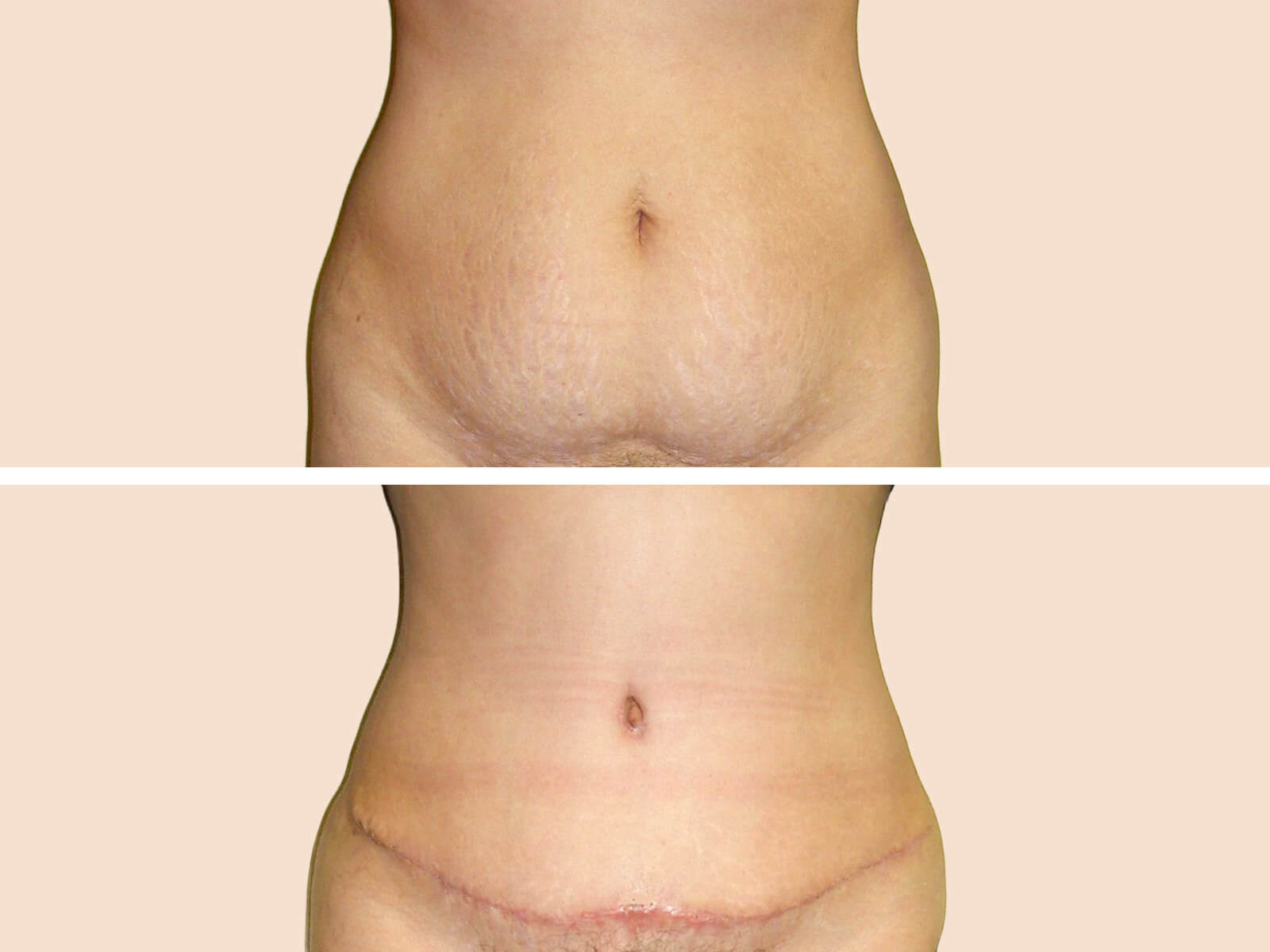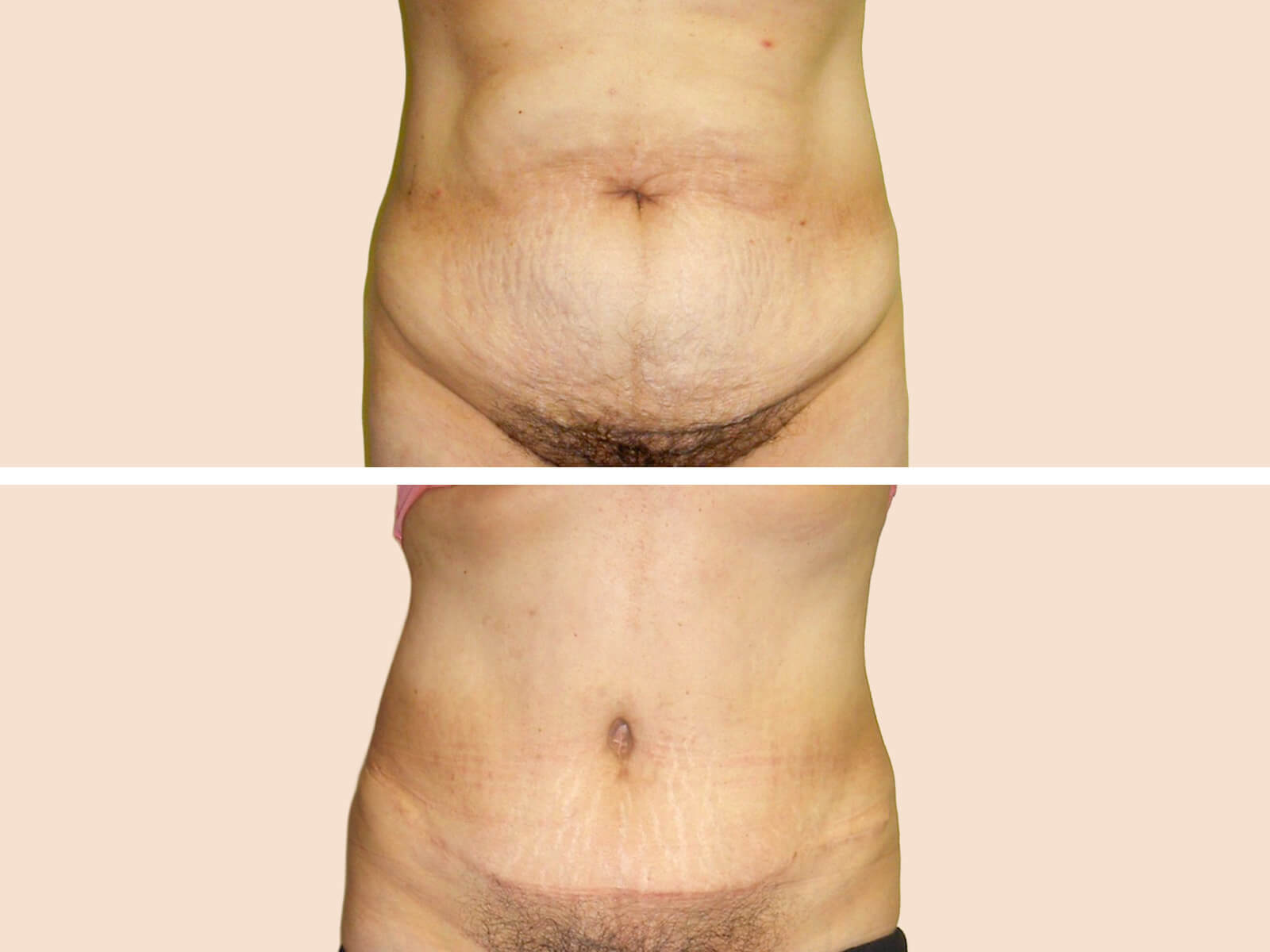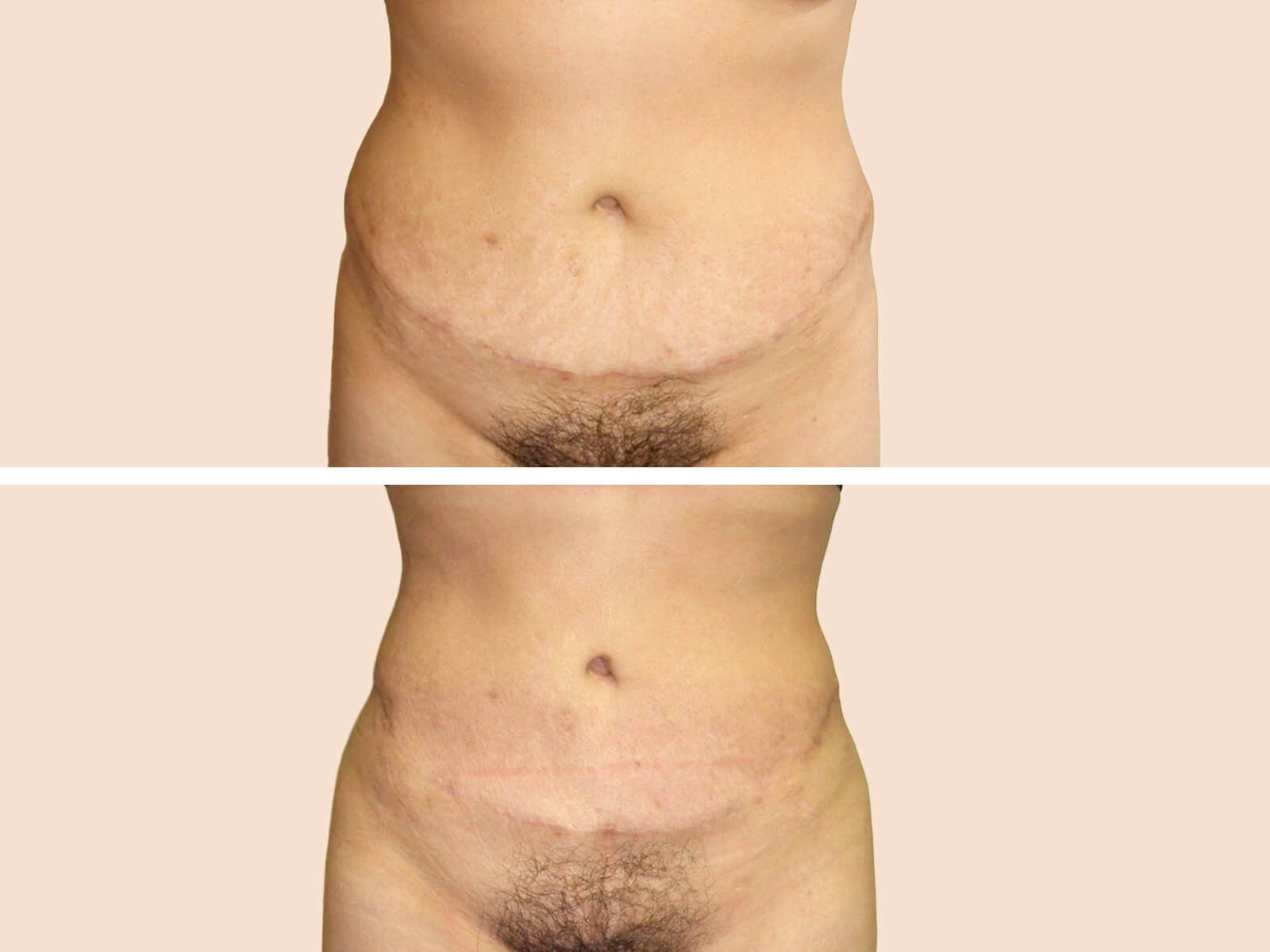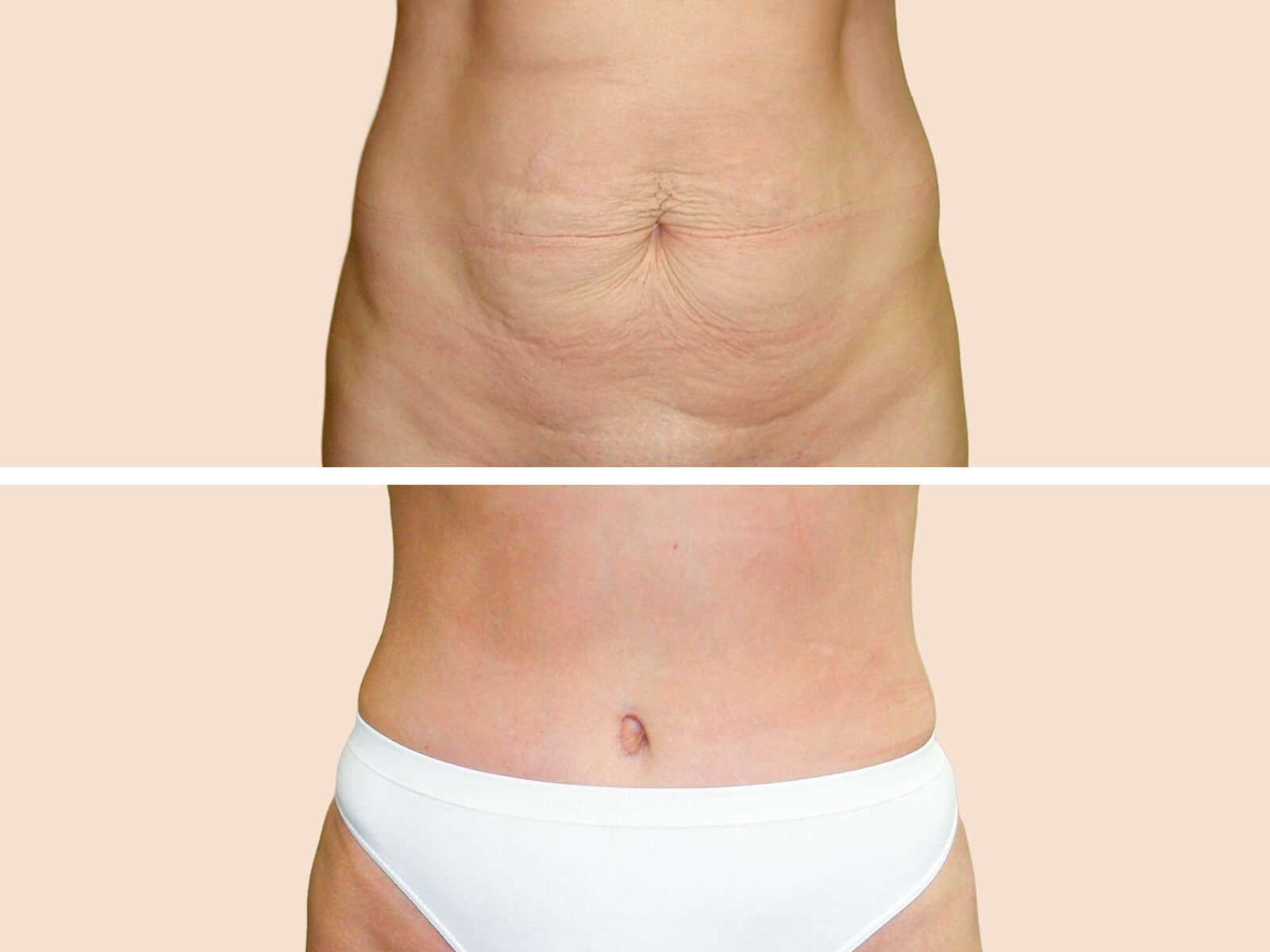Body Procedures
Tummy Tuck
Abdominoplasty, commonly referred to as a tummy tuck, is a surgical procedure designed to improve body contour by flattening and tightening the abdomen. It is important to note that abdominoplasty is not a substitute for weight loss but a solution for addressing loose skin, stubborn fat, and weakened abdominal muscles.
Thousands of successful abdominoplasty procedures are performed yearly, helping patients achieve a smoother, firmer abdominal profile. Results vary based on factors such as the extent of the procedure, skin elasticity, body structure, and the healing process.
Abdominoplasty can be a transformative option whether you are looking to regain your pre-pregnancy shape, restore confidence after weight loss, or address concerns related to aging.
Photo Gallery
Tummy Tuck: Before & After Photos
Innovation of the Tummy Tuck Procedure
Why chose Dr. Fardad?

Dr. Forouzanpour revolutionized the tummy tuck procedure by developing the innovative Umbilical Locator Device, a groundbreaking tool that enhances precision by providing a more reliable and accurate method of locating the belly button during abdominoplasty. This advanced technique minimizes complications, improves recovery, and ensures optimal aesthetic outcomes.
Renowned for his meticulous attention to detail and patient-focused approach, Dr. Forouzanpour combines cutting-edge surgical techniques with an artistic eye to deliver natural-looking results. By tailoring each surgical plan to meet the unique goals and needs of his patients, he has become a top choice for individuals seeking a more contoured silhouette and renewed self-confidence.
Your Consultation
During consultation, Dr. Forouzanpour will carefully assess your unique needs and goals. He will discuss your medical history, perform a physical examination, and answer questions regarding the procedure. Dr. Forouzanpour will explain the different types of abdominoplasty, discuss the potential risks and benefits, and help you determine if this procedure is right for you.
The Ideal Candidate
The ideal candidate for a tummy tuck is generally in good health, at or near their ideal weight, and has realistic expectations for the procedure. Individuals who have experienced significant weight loss, have loose or sagging skin after pregnancy, or have weakened abdominal muscles may be good candidates for abdominoplasty.
The Procedure
Abdominoplasty, or tummy tuck surgery, is typically performed in an outpatient surgical setting under general anesthesia. This ensures the patient is asleep and comfortable throughout the procedure. In some cases, premedication may be administered to help the patient relax beforehand.
The procedure commonly begins with an incision placed low on the abdomen, just above the pubic hairline, the size depending on the extent of excess skin and the presence of skin folds. A smaller incision is made around the navel to reposition it later.
Once the incisions are made, the skin is carefully separated from the underlying abdominal muscles. The weakened or stretched abdominal muscles are then tightened and reinforced with sutures, creating a firmer abdominal wall. The skin is gently folded over the newly tightened muscles, and any excess skin and fat are removed for a smoother, flatter contour.
The navel is reconstructed to align naturally with the new abdominal shape. In most cases, surgical drains are temporarily placed to prevent fluid buildup and promote proper healing. The appearance of the navel might have slight variation, though Dr. Fardad takes care to achieve an aesthetically pleasing result.
Abdominoplasty is a transformative procedure designed to restore a firmer and more toned abdomen, helping patients feel confident and comfortable in their bodies.
Recovery
Patients are typically discharged home with prescriptions for pain medication and antibiotics. Mild discomfort at the surgical site is common in the initial days following surgery. Full recovery usually takes several weeks. Dr. Forouzanpour will provide specific post-operative instructions, which may include avoiding strenuous activities for 3-4 weeks and wearing a compression garment.
have a question?
Tummy Tuck: Frequently Asked Questions
Can I have liposuction of my waist at the same time?
Typically, liposuction of the waist or love handles is performed simultaneously to enhance and improve the contour of the hips.
How long before I can start exercising?
Every patient’s recovery time is different. The amount of dissection, closure tightness, and muscle repair may influence postoperative recovery time. Most of our patients can resume most activities within 2 weeks. However, heavy workouts and abdominal exercises will be restricted for 2-3 months.
Can I drive myself home?
For your safety, after taking general anesthesia for the tummy tuck procedure, you must schedule transportation and care for the first few days.
Can I still get pregnant after a tummy tuck?
Although not advisable, a patient can still get pregnant. Internal sutures placed to tighten the protruding and weak muscles will likely break and the skin could stretch again. After delivery, the patient and doctor can decide whether another tummy tuck is necessary and safe.
Tummy Tuck Scarring
In women who have undergone lower abdominal surgeries, such as cesarean section (C-section) or fibroid surgery, the existing scars may be incorporated into the tummy tuck scar and take several months to a year to fade based on genetics, age, nutrition, dietary habits, and other factors. Following the surgeon’s instructions is essential to reduce the risk of complications.
What are the potential risks of a tummy tuck?
As with any surgery, potential risks and complications of a tummy tuck include infection, bleeding, scarring, numbness, and potential for complications with healing.
Will insurance cover a tummy tuck procedure?
Although most tummy tuck surgeries are performed for aesthetic/cosmetic reasons, some patients may have severe muscle weaknesses, ventral or umbilical hernia, pain, severe skin excess, and/or skin breakdown after weight reduction surgeries, and may be covered by insurance health plans.

